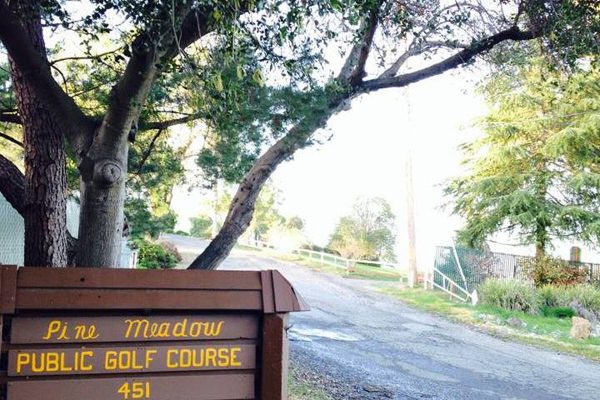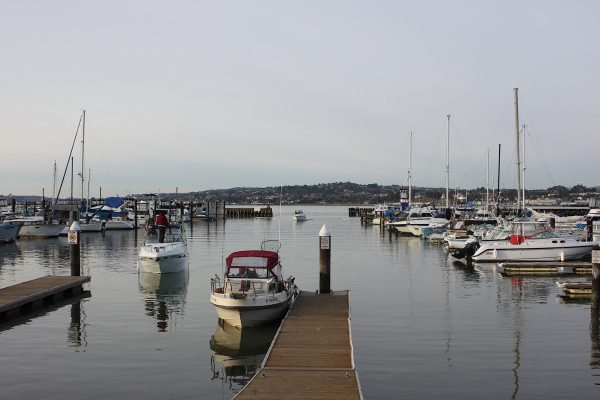MARTINEZ, Calif. – A public hearing for a mitigated negative declaration and vesting tentative map for the former Pine Meadow Golf Course will take place Tuesday during a meeting of the Planning Commission.
The property is at 451 Vine Hill Way, and now is owned by the Meadow Creek Group, according to a notice issued by the city of Martinez. Trent Sanson will represent DeNova Homes, the applicant.
Information about the project is available online at http://www.cityofmartinez.org/depts/planning/vine_hill_residential_project.asp.
According to the city’s announcement, Sanson will make a presentation on the project, after which members of the public will be able to give their comments. Once the public is finished, the Planning Commission will take its action.
After the meeting, appeals may be made within 10 calendar days of the Commission’s decision. If that happens, the City Council will schedule a hearing and make its own decision. Any court appeals would be limited to issues raised during or before Tuesday’s Planning Commission hearing.
The 26.77-acre property is zoned Residential-7.5, according to a Jan. 18, 2017 decision of the City Council, which found that substantial evidence showed the site had a residential General Plan land use designation and zoning of R-1-7500, which now is referred to as R-7.5. That decision meant no amendments to the city’s zoning or General Plan would be required of a proposed subdivision of the site, so long as the residential uses are consistent with the $-7.5 zoning.
While the nine-hole golf course, Pine Meadow, closed in 2015, the site has a restaurant, bar and vehicle storage. It has utility service, a 2,634-square-foot building, several storage and maintenance sheds, asphalt parking areas, an irrigation basin and landscaping.
According to the submitted vesting tentative subdivision map, 92 single family homes would be built on the site, and 29 trees would be removed. The applicant also has submitted plans for landscaping, grading, drainage, utilities, stormwater control, the trees’ removal and building demolition.
According to city documents, the city has determined that the proposed project wouldn’t have significant effects on the environment, so long as it incorporates certain mitigations, so the city has proposed adopting a Mitigated Negative Declaration under the California Environmental Quality Act.
The site has not been found on lists of hazardous waste sites or disposal sites, the documents noted.
A public review of the Mitigated Negative Declaration and Initial Study, prepared by De Novo Planning Group of El Dorado Hills, took place from April 4 to May 4.
Judy Bendix and Amy Richey of Mosaic Associates of Pinole examined the site’s biology, and in its report said the former golf course at one time had been part of a farm and ranch where walnuts, almonds and grapes had been grown, and its pond, lined with cattails, is man-made. Mosquito fish and mala pair of mallards have been seen there, as have been Pacific treefrogs, the report said, but the pond depends on pumped groundwater and municipal water.
It has non-native grasses, and its oaks, cedars, pines and eucalyptus trees share space with introduced cover shrubs. Bushtits, western scrub jays, Swainson’s thrushes, black phoebes, raccoons and domestic cats live or forage there.
Bendix and Richey wrote that 65 rare plants had been listed within a nine-quadrangle area surrounding the site, but because of continuous site disturbance, initially from agriculture and later from golf course maintenance and surrounding suburban development, “it is extremely unlikely that any special-status plant would occur within or in the vicinity of the study area.”
In fact, no rare plants were detected during their survey, they wrote.
In addition, the site’s historical and continuing disturbance also make it “very extremely unlikely” that special-status animals would be found there, although nesting burds may use trees and the golf course vegetation. Bendix and Richey wrote that 13 special-status animals were sought out for their potential to occur on the Pine Meadow site, but 12 were disqualified because suitable habitat wasn’t present. The Habitat for the California red-legged frog is present, but no frogs were found during their surveys.
Mosaic biologists surveyed the manmade pond for two days. “We observed many Pacific treefrogs, but no California red-legged frogs of any life stage were observed on site, nor were any other special-status animals,” they wrote.
Nor does the site support rare natural communities and no special-status species or rare plants were found, they wrote.
However, trees might provide suitable nesting and forage habitats for a variety of birds, including those with special status or protected under the Migratory Bird Treaty Act.
The site “is fully disturbed and native habitats have been largely eliminated,” they wrote “Accordingly, biological constraints to development are limited.” Nesting birds could be protected by conducting site disturbance activities outside nesting seasons – Feb. 1 through Aug. 31 – or through other approaches, they wrote.
“If the site is purchased and proposed for development, we recommend that pumping into the irrigation pond be discontinued. This would allow the pond to dry and would allow for an evaluation of its hydrology absent an artificial source,” they wrote. Eventually, the Army Corps of Engineers would need to examine the pond and swales to determine if they could be considered wetlands, they wrote.
The initial study, prepared by De Novo Planning Group, said the site was developed in 1970 for golfing, golf course maintenance, retail and food service. While the golf course operations ended April 12, 2015, the restaurant, bar and vehicle storage as well as site maintenance have continued and the tavern and clubhouse remain, as do several storage and maintenance sheds.
A single paved road leads to the clubhouse and two parking lots. One lot is paved, and the other is gravel.
De Novo Planning Group is proposing a 92-unit residential subdivision on the 26.77 acres, with 17.429 acres devoted to residential lots, 158,907 square feet designated for private open space and drainage, 2,465 square feet for emergency vehicle access and 248,557 square feet slated for streets and right of way.
Residential lots would have 6-foot wooden fencing at the rear and sides of each lot.
An open space corridor along Vine Hill Way and Center Avenue would separate the residential lots from the existing road, and would be landscaped with a variety of plants and grasses. In addition, 278 trees would be planted on the site, most of which would be in residential lots. Coast live oaks would be planted at the site’s northeast corner and Vine Hill Way. Purple plums would be planted where the proposed A Street would connect with Morello Avenue.
The development would have public services and utilities, the initial study said. Buildings and the golf course would be demolished.
Abrams Associates of Walnut Creek examined how the project would affect transportation and circulation, looking at Morello Avenue, California Highway 4 ramps, Center Avenue, Vine Hill Way and entrances to the proposed subdivision.
Abrams also looked at transit service, pedestrian and bicycle transportation.
It said the projected trip calculations would generate 17 inbound and 52 outbound trips in peak morning traffic, and 58 inbound and 34 outbound trips at peak evening times.
At the proposed entrances on Morello and Center avenues, the contractor found no safety capacity or sight distance problems, and the intersections would meet required design standards. Nor does the project warrant a traffic signal or all-way stop control, the report said.
The development would provide adequate off-street parking and wouldn’t generate a significant increase in traffic or create new safety problems for pedestrians or bicyclists. .
In fact, pedestrians and bicyclists would used both existing and planned amenities that connect the site with its neighbors, but wouldn’t cause significant increase to pedestrian or bicycle traffic. It wouldn’t impact existing bus routes or stops, either, the report said.
Abrams recommended the project design include a network of bicycle paths or lanes and said the project would minimize barriers to pedestrian access and interconnectivity.
The developer would deliver telecommuting information to new tenants, the report said.
But designers should include a transit stop with high-quality, high-frequency bus service within a quarter mile and provide for walking and bicycling in the neighborhood, the report noted.
During the development’s construction, traffic, especially from heavy equipment, could be increased while homes are built, and that could last up to five years. The weekday work is expected to take place from 7 a.m. to about 4 p.m., and construction workers would need parking spaces for up to 25 vehicles during its peak. More parking would be needed for delivery vehicles.
Each phase would be subject to a traffic control plan overseen by the Martinez city engineer, the report said. That would bring the traffic congestion down to a less-than-significant impact, the report said.
This project has had a history of controversy since the descendants of Pine Meadow golf course builder, John Coward, decided to close the course and sell the property they had inherited from their father when Martinez itself expressed no interest in acquiring the land.
Denova’s intent to develop the site was delayed when a citizens group calling itself Friends of Pine Meadow (FoPM) obtained enough signatures to have the project put on the November 2015 ballot. The developer withdrew its application, and FoPM stopped pushing for the public vote.
Friends of Pine Meadow members have continued opposing the development, just as Coward’s daughter, Christine Dean, has opposed their use of the words “Pine Meadow” in its name, saying it mistakenly suggested the group was made up of friends of the golf course’s owners.
When Dean filed suit against the group, the California First District Court of Appeal found in favor of Friends of Pine Meadow, which prevailed in the Strategic Lawsuit Against Public Participation (SLAPP) that claimed the group was using “Pine Meadow” to indicate the group “represented the interests of these owners and the golf course.”
That ruling upheld the 2016 decision for Friends of Pine Meadow, when plaintiffs sought to curtail FoPM members’ comments on the matter at public meetings and claimed the organization had interfered with a prospective economic advantage and had caused defamation through false statements. Court rulings found instead the comments were protected speech.
Several members of Friends of Pine Meadow, including Tim Platt and Mark Thomson, subsequently obtained enough signatures last year to put a measure on the June 5 ballot to require public referendums on changes that would lead to more concentrated use of Martinez open space, park and outdoor recreation designations. If Measure I succeeds, it would apply to private property as well as public land.
When a judge agreed the citizens’ open space initiative could proceed, Martinez City Council placed a similar measure on the ballot. The main difference is the city’s Measure F would not apply to private property. If both are approved, the measure that receives the most votes would prevail.
The Planning Commission’s meeting will start at 7 p.m. Tuesday in the Council Chamber of Martinez City Hall, 525 Henrietta St.


